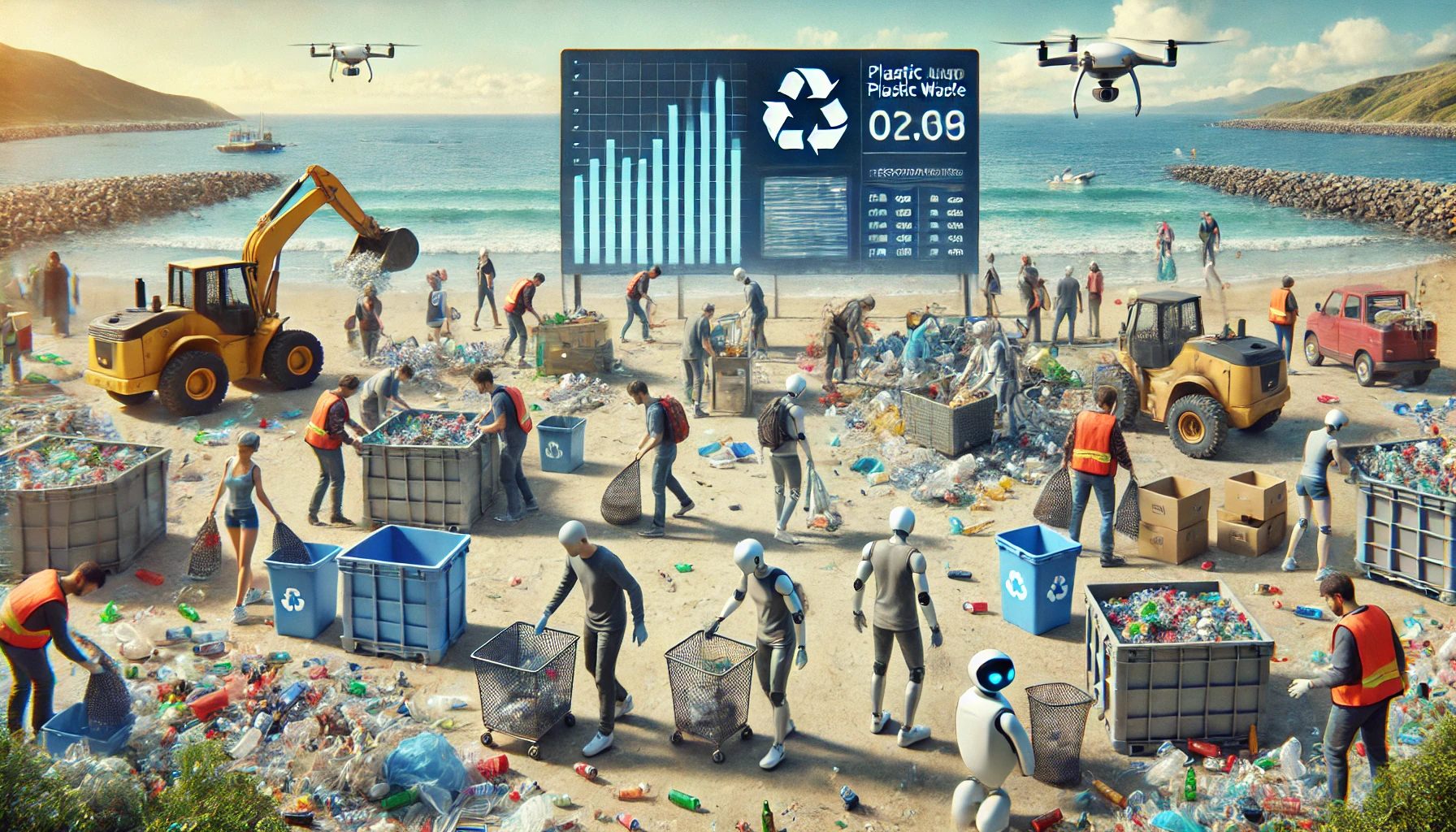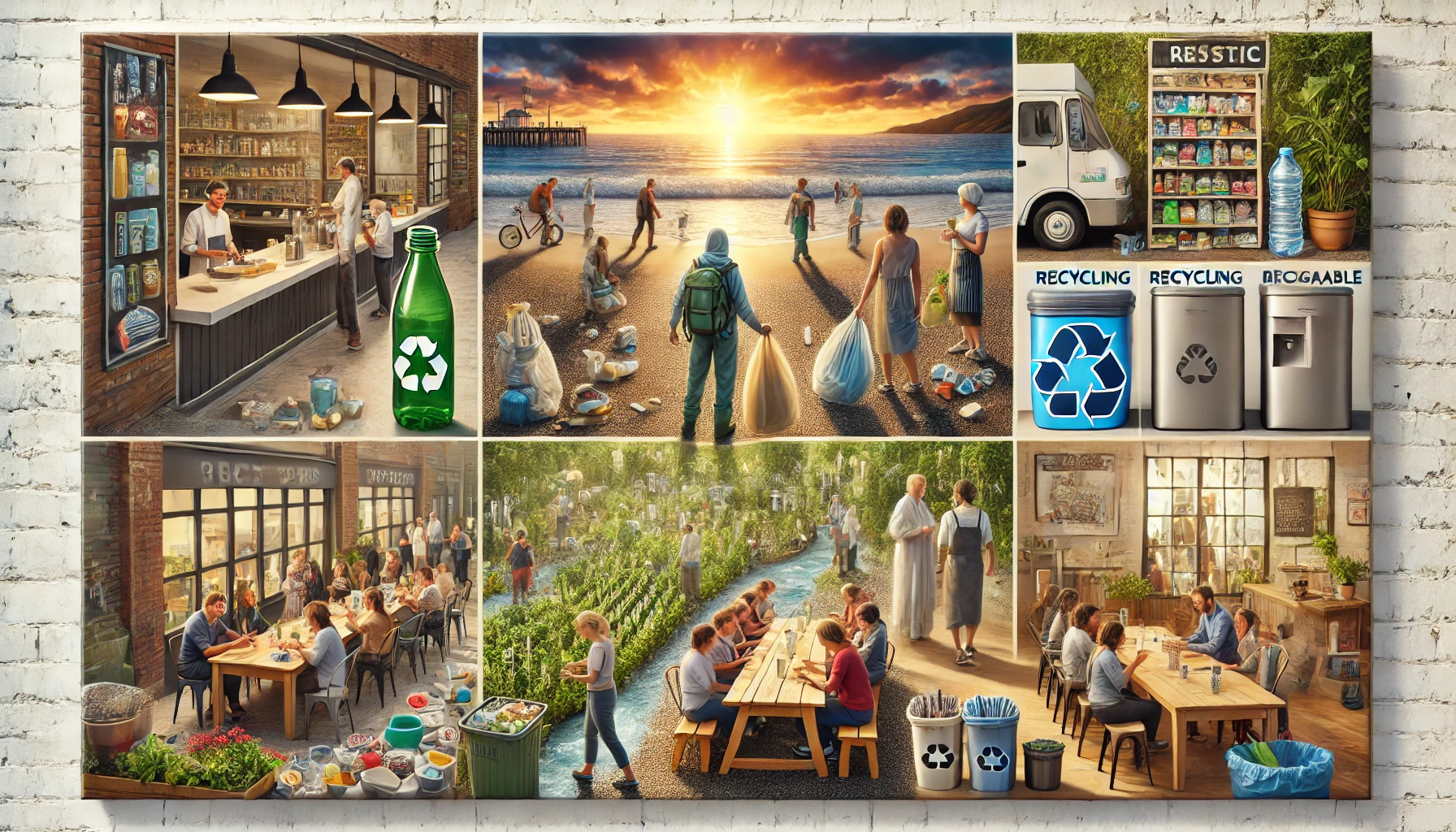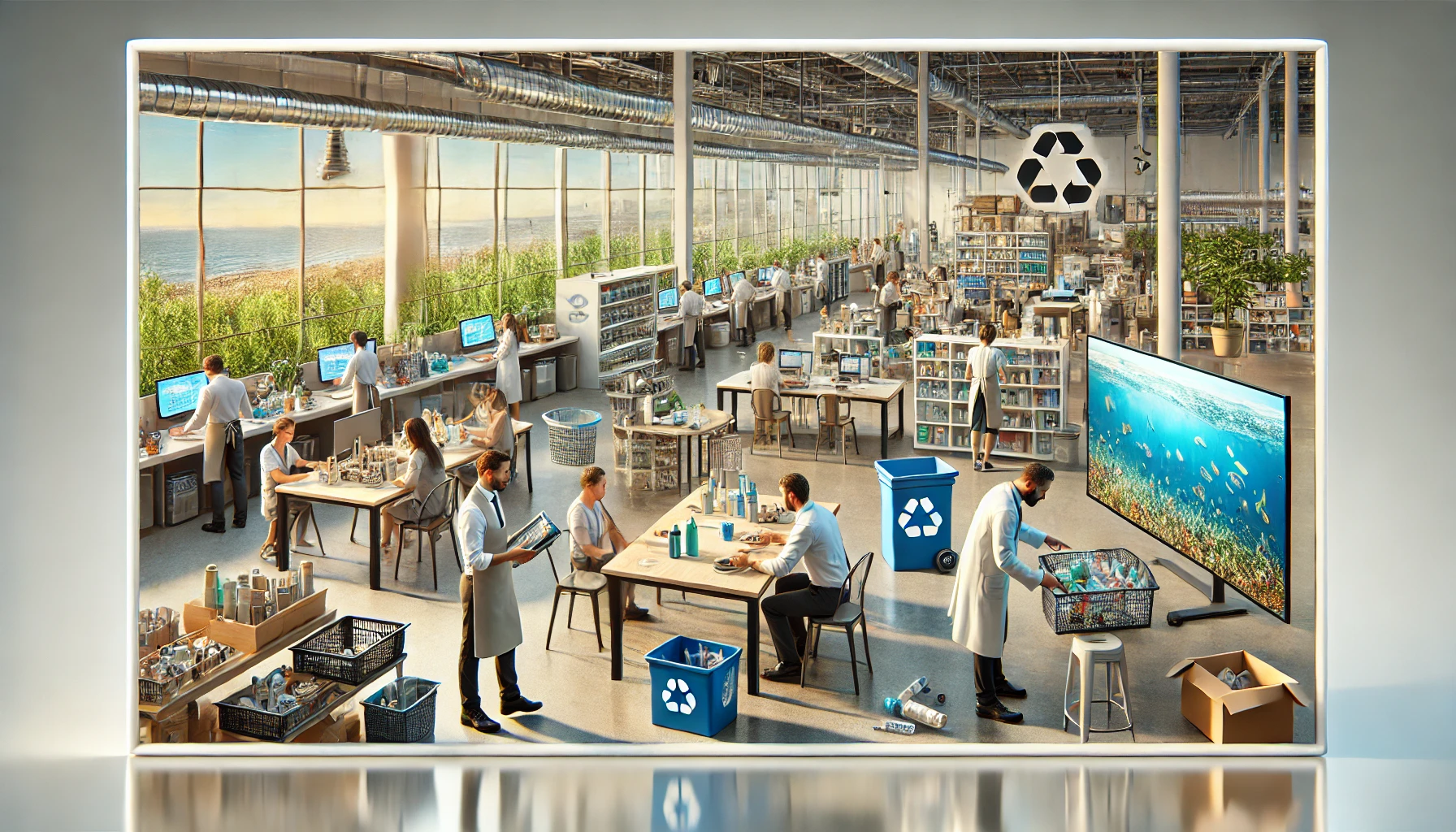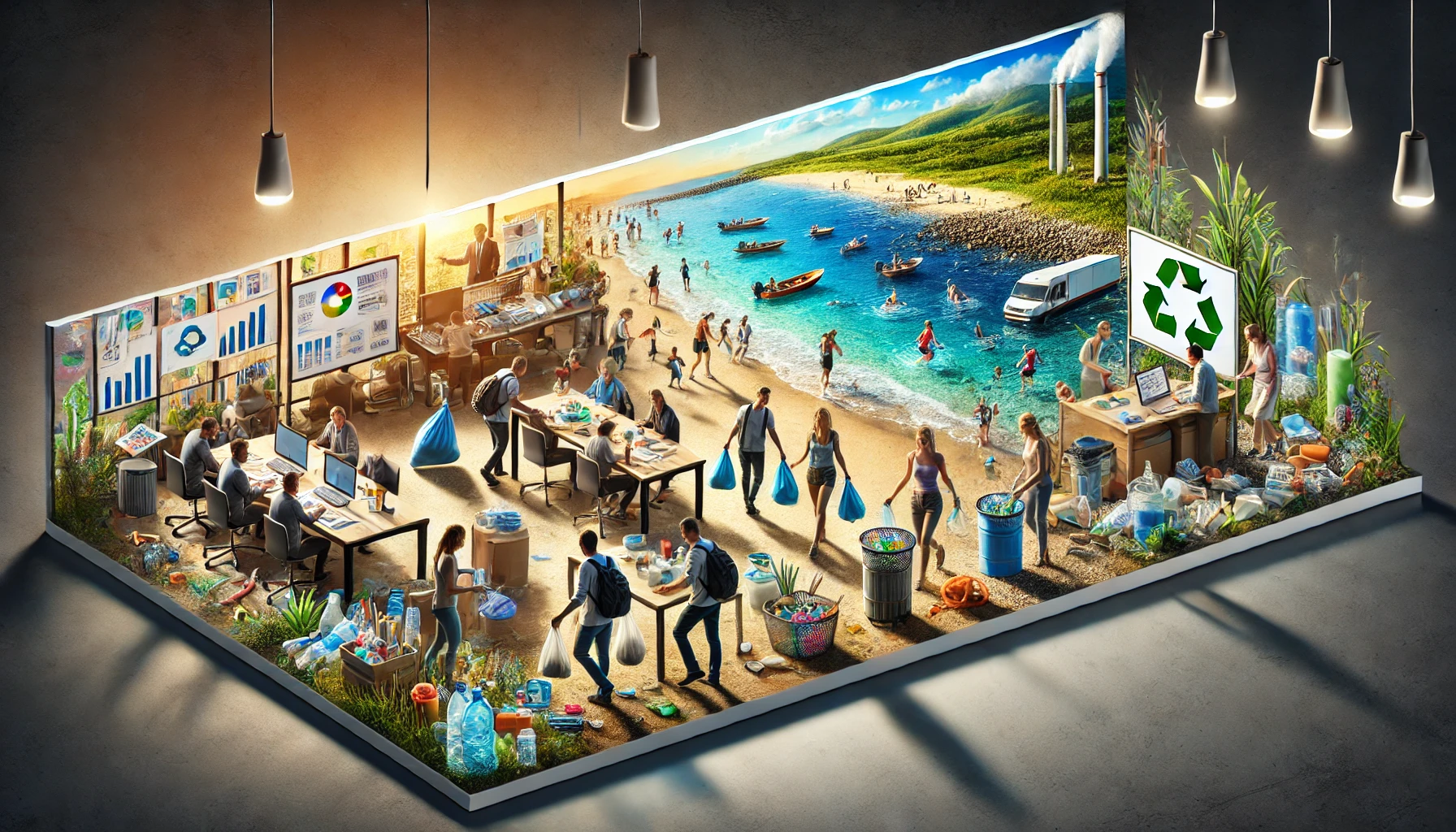
Plastic waste is one of the most pressing environmental challenges of the 21st century. As plastic production continues to rise globally, so does the volume of plastic waste, leading to severe environmental consequences. From plastic bags and bottles to plastic packaging and cutlery, plastic waste has infiltrated every aspect of modern life. This article will delve into the importance of plastic waste reduction, strategies for reducing plastic consumption, and ways individuals and businesses can contribute to solving this global problem.
The Scale of the Plastic Waste Problem
Plastic waste is a growing environmental crisis that threatens ecosystems, wildlife, and human health. Plastic pollution is pervasive, affecting our oceans, landscapes, and even the air we breathe. As plastics are lightweight and durable, they easily travel through storm drains and waterways, eventually reaching the ocean. In fact, it is estimated that by 2050, there will be more plastic in the ocean than fish, by weight.
Key Facts About Plastic Waste:
-
Over 8 million metric tons of plastic enter the ocean every year.
-
More than 8 billion plastic bottles are sold annually, and only about 1 in 5 are recycled.
-
Plastic bags, which are commonly used for shopping, account for a significant portion of plastic waste, and billions of these bags end up in landfills or the natural environment each year.
-
Single-use plastics like plastic straws, cutlery, and packaging are used for minutes but persist in the environment for centuries.
-
The average recycling rate for plastics is around 9%, highlighting the inefficiency of current recycling systems.
These statistics highlight the scale of the problem and underline the urgent need for a comprehensive approach to plastic waste reduction.
The Impact of Plastic Waste on the Environment
Plastic waste poses significant threats to the environment. From harming wildlife to contributing to climate change, the negative effects of plastic pollution are vast and complex.
1. Harmful Effects on Wildlife
Wildlife is one of the most directly affected by plastic waste. Animals, both on land and in the oceans, often mistake plastic for food. This can lead to starvation, injury, or death as animals ingest plastic debris or become entangled in plastic trash like fishing nets and plastic foam packaging.
-
Marine life is especially vulnerable, with species such as turtles, fish, and seabirds ingesting plastic particles, leading to digestive blockages, malnutrition, and even death.
-
Microplastics, which are tiny fragments of plastic, are now found in storm drains, soil, and water sources, further complicating efforts to clean up the environment.
2. Contribution to Climate Change
The production of plastic is a carbon-intensive process. The extraction of fossil fuels, refining, and polymerization of plastics release harmful greenhouse gases that contribute to climate change. According to a study by the Center for International Environmental Law, plastic production and incineration are responsible for over 400 million metric tons of greenhouse gas emissions annually.
3. Landfill and Ocean Pollution
Once plastic enters the waste stream, it often ends up in landfills or oceans. Plastic waste can take hundreds of years to degrade, and during this time, it leaches harmful chemicals into the natural environment, polluting both land and water. This long degradation timeline means that once plastic enters the ecosystem, it can remain there for generations.
Strategies for Plastic Waste Reduction
Reducing plastic waste requires a multi-faceted approach that includes individual action, business responsibility, and government intervention. Below are some of the most effective strategies for tackling the plastic waste crisis:
1. Reduce Single-Use Plastics
One of the most effective ways to reduce plastic waste is by cutting down on single-use plastics. Items like plastic bags, plastic bottles, straws, cutlery, and plastic packaging contribute significantly to the global plastic waste problem. Switching to reusable alternatives can make a big impact.
-
Reusable bags: Instead of using plastic shopping bags, choose reusable bags made from fabric or other eco-friendly materials. Many countries and regions have already banned plastic bags, encouraging the use of reusable options.
-
Reusable containers: Carrying your own containers, such as water bottles, coffee cups, and food containers, can help reduce the need for plastic bottles and disposable packaging.
-
Reusable straws: Avoid plastic straws by opting for metal, silicone, or paper alternatives. Many coffee shops and restaurants now offer reusable or compostable options.
2. Promote Recycling Programs
Recycling plays a critical role in plastic waste reduction. Recycling bins in offices, homes, and public spaces can encourage people to recycle their plastic bottles, jars, and packaging rather than throwing them away.
-
Recycled materials: Using products made from recycled plastic helps close the loop in the plastic lifecycle. This includes products like recycled plastic bottles, packaging, and even clothing.
-
Local recycling programs: Encourage participation in local recycling programs and ensure that your community has easy access to recycling bins for plastic waste.
3. Support Businesses with Sustainable Practices
Support businesses that are committed to plastic waste reduction by choosing products with minimal plastic packaging or eco-friendly packaging options. Many companies are adopting biodegradable packaging or using recycled plastics to create new products.
-
Packaging-free stores: Some grocery stores now offer bulk products where consumers can bring their own containers to avoid packaging altogether. Supporting these stores can help reduce the use of unnecessary plastic.
-
Brands with sustainable initiatives: Look for brands that use recyclable materials or compostable packaging. Many companies are moving towards more sustainable alternatives to plastic, such as using aluminum for cans and glass bottles instead of plastic.
4. Educate and Advocate
Education is key in the fight against plastic waste. By raising awareness about the environmental impacts of plastic and the importance of plastic waste reduction, we can empower individuals to take action.
-
Community engagement: Participating in local programs and clean-up events can help reduce plastic pollution in your community. Organizing beach cleanups or recycling education workshops can foster a sense of environmental responsibility among your peers.
-
Advocate for policy change: Support policies that aim to reduce plastic use, such as bans on plastic bags or plastic straws, and encourage businesses to adopt more sustainable practices.
Example: The Plastic Pollution Coalition is a global alliance of individuals, organizations, and businesses working to reduce plastic waste. By supporting advocacy groups like this one, you can contribute to larger-scale efforts to fight plastic pollution.
5. Innovative Alternatives to Plastic
As the need for plastic waste reduction grows, several innovative alternatives to plastic are emerging in the market:
-
Plant-based plastics: Made from renewable resources such as corn starch or sugarcane, bioplastics offer a biodegradable alternative to traditional plastic.
-
Compostable packaging: Many companies are turning to compostable packaging made from materials like paper, biodegradable plastics, and mushroom-based products.
-
Edible packaging: Some companies have begun experimenting with edible packaging, made from materials like rice, seaweed, or potatoes, which can reduce plastic waste and provide an additional benefit by being consumable.
Simple Tips for Reducing Plastic Use

Incorporating plastic waste reduction into your daily routine doesn’t have to be complicated. Here are some simple tips for reducing your plastic use:
-
Use reusable shopping bags.
-
Carry a reusable water bottle or coffee cup.
-
Opt for products with minimal plastic packaging.
-
Say no to plastic straws and carry a reusable straw instead.
-
Choose products made with recycled materials.
-
Participate in local recycling programs.
-
Reduce single-use plastics in the office by switching to reusable cutlery and plates.
The Role of Businesses in Plastic Waste Reduction
Businesses play a crucial role in the global effort to reduce plastic waste. As major producers and consumers of plastic, companies are in a unique position to drive large-scale change. Implementing sustainable practices within their operations can lead to significant reductions in plastic use, encourage eco-friendly innovations, and influence consumer behavior.
1. Sustainable Packaging Practices
One of the most effective ways businesses can contribute to plastic waste reduction is by reevaluating their packaging strategies. Traditional plastic packaging is a major source of plastic pollution, especially in the food and beverage industry. Many businesses are opting for alternatives that have a lower environmental impact.
-
Switching to recyclable packaging: Using recycled plastic, aluminum, or glass instead of virgin plastic for packaging can significantly reduce the demand for new plastic production. Businesses can also reduce the amount of plastic packaging by switching to minimalist designs.
-
Biodegradable and compostable materials: Some businesses are replacing plastic packaging with biodegradable materials made from plant-based products like cornstarch and seaweed. These materials break down more quickly and pose less risk to the environment when discarded.
-
Refill and reuse programs: Companies can introduce refill stations or bulk buying options to encourage customers to use their own containers and reduce the demand for single-use plastics. For example, grocery stores and cafes can offer discounts to customers who bring their own reusable containers.
Example: Unilever has made significant strides in reducing plastic packaging by committing to making all of its plastic packaging recyclable, reusable, or compostable by 2025. The company also pledged to reduce its virgin plastic use by over 100,000 tons annually by focusing on sustainable packaging solutions.
2. Corporate Social Responsibility (CSR) and Plastic Waste Reduction

Businesses that incorporate plastic waste reduction into their Corporate Social Responsibility (CSR) initiatives demonstrate a strong commitment to environmental sustainability. By engaging in plastic reduction projects, companies not only enhance their reputation but also positively influence consumer perceptions.
-
Partnerships with NGOs: Many businesses partner with environmental organizations to promote plastic pollution awareness and participate in clean-up efforts. These partnerships can include organizing events like beach clean-ups or supporting recycling programs in local communities.
-
Sustainability goals: Setting ambitious sustainability goals such as reducing plastic consumption, eliminating plastic waste, or switching to 100% sustainable materials can help businesses track their progress and hold themselves accountable to eco-conscious consumers.
-
Employee engagement: Businesses can create a green culture by involving employees in plastic reduction initiatives. Encouraging employees to adopt sustainable habits like using reusable bags or supporting plastic-free days can extend the company’s efforts to its broader workforce and their families.
Example: Starbucks has committed to eliminating plastic straws from all of its stores by 2020 and replacing them with paper straws or reusable options. The company also promotes sustainable packaging and has developed reusable cups for customers.
3. Product Innovations for Plastic Alternatives
The push for plastic waste reduction has inspired many businesses to innovate and create alternative products that replace single-use plastics with sustainable options.
-
Edible packaging: Companies are experimenting with edible packaging, made from ingredients such as rice, seaweed, and potato starch. These materials are not only environmentally friendly but can also be consumed, reducing waste even further.
-
Plant-based plastics: Known as bioplastics, these materials are derived from renewable resources like cornstarch or sugarcane. Bioplastics break down more easily in the environment compared to traditional plastic and can serve as viable alternatives in many industries, including food packaging and consumer products.
-
Reusable products: More businesses are designing reusable products to replace single-use plastic items. This includes everything from metal straws and reusable coffee cups to recyclable food containers and cloth shopping bags. These products reduce waste and can be used for years, promoting long-term sustainability.
Example: Lush Cosmetics, known for its handmade and eco-friendly products, has adopted a naked packaging approach, eliminating plastic packaging altogether for many of its products. Instead, the company uses compostable materials and recycled packaging to reduce its environmental impact.
Conclusion: The Path to Reducing Plastic Waste

The fight against plastic waste is a collective effort, and every action, big or small, can contribute to a more sustainable future. By adopting plastic waste reduction practices, supporting businesses with sustainable practices, and advocating for policy changes, we can work toward a world with less plastic and less pollution in our oceans, communities, and ecosystems. Through innovation, education, and action, reducing plastic waste is not only possible—it is essential for the health of the planet and future generations.
